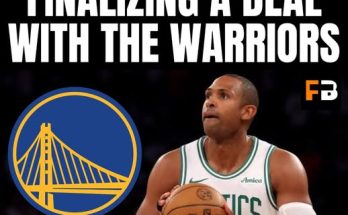The Miami Dolphins’ acquisition of Tyreek Hill in 2022 was one of the most significant moves in recent NFL history, instantly elevating the team’s offensive firepower and changing the perception of Miami as a championship contender. Hill’s electrifying speed, precise route running, and ability to turn any play into a highlight reel have made him one of the league’s most feared wide receivers. Since joining the Dolphins, Hill has consistently produced at an elite level, stretching defenses, creating mismatches, and helping quarterback Tua Tagovailoa reach new heights. Yet, despite the initial excitement and statistical production, recent discussions among analysts, fans, and insiders have brought up the provocative question: should the Miami Dolphins consider trading Tyreek Hill back to the Kansas City Chiefs? While at first glance the idea may seem counterintuitive, given Hill’s talent and impact, there are several factors that could make such a move a consideration, including team dynamics, contract implications, and long-term strategic planning.
Tyreek Hill’s arrival in Miami immediately transformed the Dolphins’ passing game. In Kansas City, Hill was the ultimate complement to Patrick Mahomes, thriving in Andy Reid’s system and developing a chemistry that consistently put defenses on notice. In Miami, Hill became the centerpiece of a vertical passing attack that allowed Tua Tagovailoa to maximize his accuracy and decision-making in the short and intermediate game. Hill’s speed and separation abilities created space for other receivers and made the Dolphins offense more explosive. In the short term, trading him away might seem like an unthinkable move, as Miami would be giving up one of the fastest and most productive players in the NFL. Hill has consistently been among the league leaders in receiving yards, touchdowns, and explosive plays, and his ability to change the course of a game in a single snap is unmatched. Losing that weapon could disrupt the chemistry that has been cultivated in Miami and potentially set back the offense by a significant margin.
Despite the on-field production, there are factors that might lead the Dolphins to explore a return trade to Kansas City. One primary consideration is the contract and salary cap implications. Tyreek Hill signed a massive deal with Miami, making him one of the highest-paid wide receivers in the league. Large contracts carry inherent risks, as they tie up a significant portion of the salary cap and limit a team’s flexibility to address other needs. If the Dolphins believe that the team’s championship window is constrained or that reallocating resources across multiple positions could strengthen the overall roster, trading Hill might become a financially strategic move. Kansas City, meanwhile, has previously shown a willingness to pay premium contracts for Hill, and a return trade could be structured in a way that offsets some of Miami’s financial obligations while bringing back valuable assets, including draft picks or young talent. This approach could provide Miami with the ability to bolster the offensive line, add depth to the defensive secondary, or address other pressing roster concerns, ultimately improving the team’s overall balance.
Another angle to consider is the potential impact on team chemistry and locker room dynamics. While Hill is undoubtedly a phenomenal talent, integrating a high-profile player into an existing roster always carries challenges. Team chemistry is a subtle yet crucial factor in sustaining long-term success in the NFL. Any friction, perceived favoritism, or misalignment in the offensive scheme can impact the performance of not just the quarterback but the entire offensive unit. In Miami, Hill has had moments where the adaptation to the offensive system and building synergy with Tua and other receivers required adjustment. While these issues are not uncommon, the Dolphins’ front office might evaluate whether trading Hill in exchange for multiple players or draft capital could help foster a more cohesive and evenly distributed roster, especially if they are targeting long-term success rather than immediate fireworks.
Strategically, there is also the consideration of how the Dolphins envision their offense in the next three to five years. Tyreek Hill is 30 years old, an age where wide receivers often maintain production for several more seasons but also face increasing risk of injury and declining speed. A forward-looking team may evaluate the possibility of turning an aging but elite talent into a set of assets that better align with the team’s evolving offensive philosophy. Miami has already demonstrated creative offensive planning under head coach Mike McDaniel, but the team might choose to pivot toward a more diversified receiving corps, a balanced attack that leans on the running game, or a system that emphasizes tight ends and slot receivers over one dominant deep threat. Trading Hill could facilitate this transition, providing a broader foundation for the team’s offensive identity while managing salary cap considerations.
On the flip side, the idea of Tyreek Hill returning to Kansas City has its own compelling narrative. The Chiefs, led by Patrick Mahomes, thrived with Hill as their primary deep threat before he departed. Reacquiring Hill would instantly restore one of the league’s most explosive passing combinations and give Kansas City a proven weapon capable of altering defensive schemes on every play. For Miami, any potential trade back to Kansas City would likely require significant compensation, reflecting Hill’s elite talent and market value. This could include multiple high-round draft picks or young, talented players with starting experience. Such a haul could be enticing for Miami, especially if the front office is considering the longer-term composition of the team and the need to maintain flexibility for other strategic acquisitions.
However, the Dolphins must also weigh the potential backlash from fans and media. Tyreek Hill’s arrival was celebrated as a franchise-defining move, and any talk of trading him back to Kansas City could be seen as a step backward. The optics of sending a superstar back to his former team, particularly one with whom Miami has actively competed in the AFC, might be controversial. Managing fan expectations and maintaining trust in the front office’s strategic vision would be a critical component of executing such a trade, should it even be seriously considered. Transparent communication about the rationale behind the trade, emphasizing team-building philosophy and long-term competitiveness, would be essential to mitigate negative perception.
In addition, there is the performance-related risk of disrupting Miami’s offense. While Tyreek Hill is undeniably talented, Tua Tagovailoa has benefited significantly from having a player of Hill’s caliber as a target. The quarterback-receiver relationship is vital in the NFL, and replacing Hill with a combination of younger or less-proven receivers could create inconsistency and reduce efficiency in the passing game. The Dolphins would need to ensure that any assets received in a potential trade would translate into immediate or near-term offensive production to avoid a decline in overall team performance. Draft picks, while valuable, are inherently uncertain and require careful development, making the trade decision even more complex.



